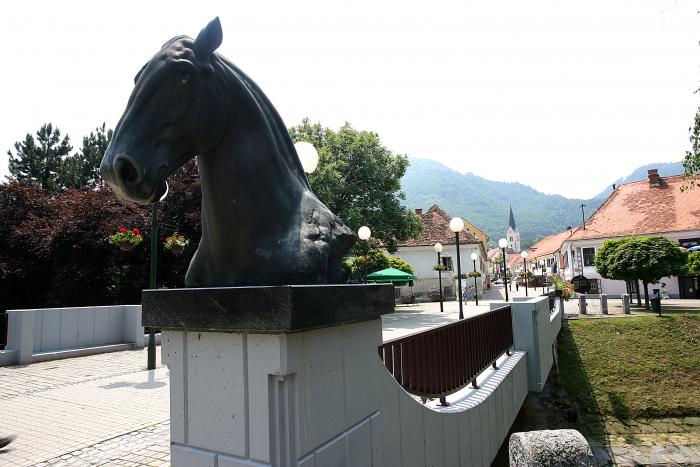
A white horse set against a red background: the coat-of-arms of Slovenske Konjice is not just a distinctive symbol; it is also associated with an ancient legend that explains how the town in Slovenia’s Štajerska region was created.
According to the legend, a dragon lived inside a local mountain and would often threaten to destroy villages in the area by flooding them with water form an underground lake. After a plea by a local noble, the dragon promised not to wreak havoc – but only if he was given six virgins to devour every year. For many years, the terrible sacrifice ensured peace in the land. One year came the turn of the nobleman’s daughter to be sacrificed. Even the noble realized that there was no way to save his beloved Marjetica. But just before Marjetica and the five other virgins were handed over to the dragon, St. George miraculously appeared on a white house – and slayed the dragon.
The nobleman was so grateful to his daughter’s savior that he had the Church of St. George built not far from the dragon’s hideaway, and a town soon sprang up around the church. It became known as Konjice – from the Slovenian word “konj,” meaning horse. A horse also appeared on the local coat-of-arms, and a stream that flows from the mountains is still known as Dragon’s Blood in memory of the creature’s destruction.
An annual festival now celebrates the local legend. It features handcrafts, home cooking, and traditional music, but for locals and visitors alike, it is also an opportunity to remember the dragon. Festivalgoers can taste “dragons’ stew” and watch a figure of the dragon make its way down the town’s streets – in a celebration of a legend that still unites Slovenske Konjice and explains the origin of the now-peaceful town.

































































